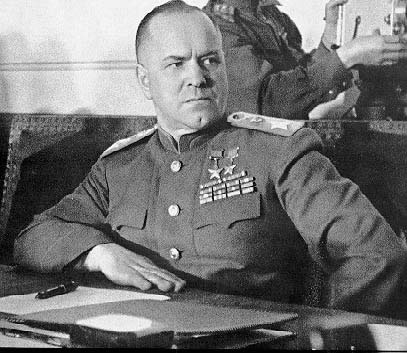Wünsdorf Officer's House
Wünsdorf-Zossen was already a military area in Imperial times, and the building also dates from this period. During the First World War, Wünsdorf had already grown into a huge military base, with numerous barracks, an Infantry School and the Halbmondlager (for Islamic, Indian and African prisoners of war, among others).
After the arrival of the Nazis, mainly armored troops were stationed there and the building was also used as a military school in preparation for the Olympic Games in 1936. The military facilities in the area were expanded with many bunkers, and from 1939 it also housed the headquarters. of the Wehrmacht and the building was used for the quarters of the officers working there.
The Soviets took the building in April 1945 without a shot being fired because the Germans had already abandoned it. Soviet Marshal Georgy Zhukov made it his headquarters. It later became the headquarters of the Red Army in the GDR and remained here until their complete withdrawal in 1994. Meanwhile, the area had grown into the largest Russian Army base outside the Soviet Union. The local population had been displaced and access to the area was limited. East Germans were not allowed near it and it became known as The Forbidden City or Little Moscow.
The building has been empty for almost 30 years and there are still many reminders of the years of Russian presence. The building is closed and can only be visited with a guide. Wünsdorf Zeppelin Bunker Complex and the Wünsdorf Garrison Museum can also be visited throughout the site.
Do you have more information about this location? Inform us!
Source
- Text: Jan de Jager
- Photos: Jan de Jager
- https://berlijn-blog.nl/verboden-stad-wunsdorf/
Related books
Nearby
Museum
Point of interest
- Air Raid Shelter Wünsdorf-Waldstadt - Wünsdorf-Waldstadt
- Air Raid Shelter Wünsdorf - Wünsdorf
- Air Raid Shelter Wünsdorf - Wünsdorf
Monument
- War Memorial Wünsdorf - Wünsdorf
- War Memorial Neuhof - Neuhof
- War Memorial Lindenbrück - Lindenbrück
Cemetery
- Commonwealth War Cemetery Zehrensdorf (Indian) - Zossen
- Soviet War Cemetery Zossen - Zossen
- Soviet War Cemetery Baruth - Baruth






